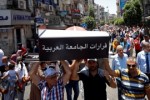Belfast is beautiful but its peace walls convey the scars of brutal recent history
The scars of the Troubles are visible in the physical barriers that divide Belfast’s citizens in two, writes Lucy Kenningham
Every evening in Belfast, gates at the interface barriers on the Shankill and Falls roads are shut by 6pm. A wall that is three times higher than that which divided Berlin still separates the citizens of Northern Ireland by religion. Certain other gates along the line are closed at 7pm (Townsend St) and 10pm (Lanark Way) – interested parties can head to Reddit for the full compilation of closing times.
Residents can still find their way around the imposing structures but these walls are a powerful symbol of the enduring division and fear literally dictating the geography of the city.
No wonder, you could say. Most people in Northern Ireland remember at least part of the 30-year long conflict during which over 3,500 people died – half of these being civilians. The battle between Republicans, who want a united Ireland, and Loyalists, who want to........
© City A.M.






















 Toi Staff
Toi Staff Gideon Levy
Gideon Levy Belen Fernandez
Belen Fernandez Andrew Mitrovica
Andrew Mitrovica Dr Ramzy Baroud
Dr Ramzy Baroud Warren J. Blumenfeld
Warren J. Blumenfeld Tarik Cyril Amar
Tarik Cyril Amar Rachel Marsden
Rachel Marsden Tafi Mhaka
Tafi Mhaka Imad K Harb
Imad K Harb
